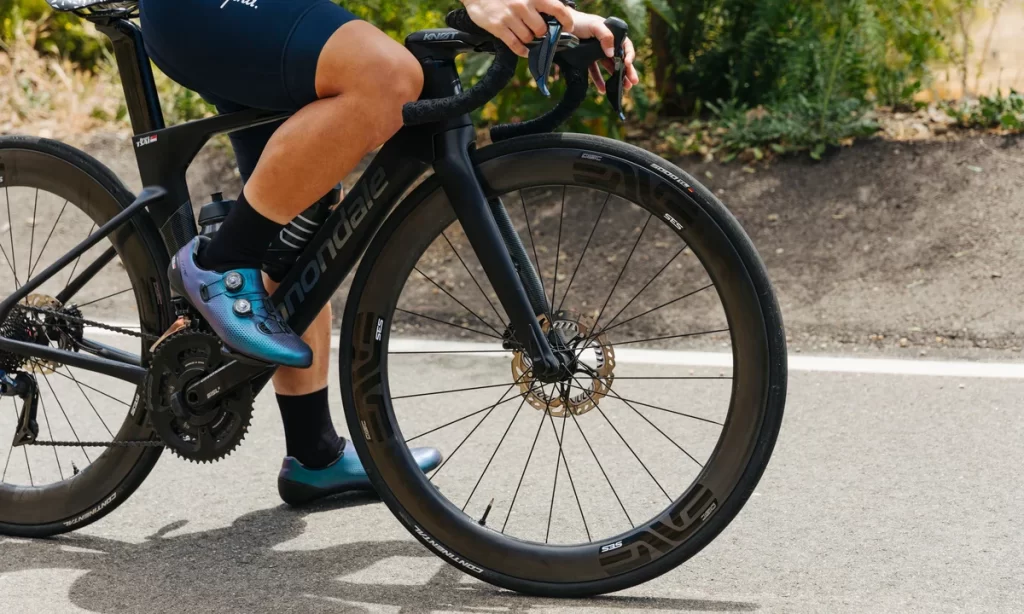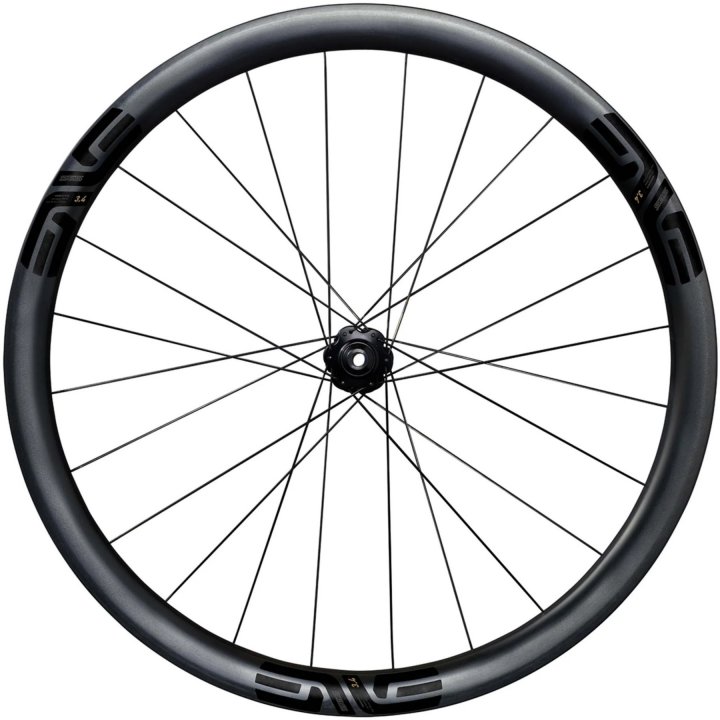Aerodynamic Advancements in Road Bike Wheels

Key Point Summary of Aerodynamic Advancements in Road Bike Wheels:
- Aerodynamic Wheels Enhance Speed: Modern wheel technology focuses on reducing drag for faster cycling.
- Wheel Shape Matters: Deep-section rims cut through air more efficiently, improving speed and stability.
- Materials and Build Quality: Advances in carbon fiber and wheel construction techniques offer strength and lightness.
- Impact on Performance: Aerodynamic wheels can significantly affect overall bike speed, especially in time trials or sprints.
- Investment vs. Return: While aerodynamic wheels come at a premium, they offer a noticeable improvement in performance for serious cyclists.
As a seasoned cyclist with over three decades in the saddle, racing and riding across a spectrum of disciplines from mountain biking to cyclocross, I’ve witnessed firsthand the evolution of bike technology. Of all the advancements, those in aerodynamic road bike wheels have arguably had the most profound impact on performance. Today, I want to share some insights into how these wheels work and why they might be the next upgrade you consider.
Aerodynamic Advancements in Road Bike Wheels: The Quest for Speed
The pursuit of speed is a constant in cycling, and nowhere is this more apparent than in the development of road bike wheels. Early in my racing days, wheels were largely uniform, with little variation beyond size and material. Fast forward to today, and the landscape has changed dramatically, with aerodynamics leading the charge.

The Aerodynamic Principle
At the core of aerodynamic wheel design is a simple principle: the less air resistance you encounter, the faster you’ll go. This resistance, or drag, is the cyclist’s main adversary on flat and rolling terrain. Aerodynamic wheels are designed to minimize this drag, allowing for greater speed with the same amount of effort.
Deep-Section Rims: Cutting Through the Air
The most noticeable feature of aerodynamic wheels is their deep-section rims. Early in my career, such rims were a rare sight, reserved for the highest levels of competition. These rims, often 40mm or deeper, are engineered to slice through the air more effectively than traditional flat rims. In practice, this translates to a smoother, faster ride, particularly noticeable when pushing the pace on flat roads.
The Science of Wheel Aerodynamics
The magic behind these wheels lies in their shape and material. By extending the rim depth, designers create a profile that reduces air turbulence around the wheel. This not only cuts down on drag but also improves the wheel’s stability in crosswinds, a common issue with the first generations of deep-section rims.
Carbon fiber has become the material of choice for these aerodynamic marvels. Its strength-to-weight ratio is unmatched, allowing for the construction of both light and strong wheels. This was a game-changer for me. I remember the first time I switched to carbon aerodynamic wheels; the difference in responsiveness and speed was palpable from the first pedal stroke.

Performance Impact
The question many ask is: how much difference do aerodynamic wheels really make? From my experience, the answer is significant, but with a caveat. The benefits are most pronounced at higher speeds. During time trials, triathlons, or any situation where maintaining a high speed is crucial, these wheels can shave off minutes over long distances.
Cost vs. Benefit
It’s no secret that aerodynamic wheels are an investment. The cost can be steep, especially for those just entering the sport. However, for the serious cyclist looking to enhance performance, they offer a clear advantage. The key is to weigh this against your cycling goals and budget.
Choosing the Right Wheels
For those considering making the leap, my advice is to research and, if possible, test different wheels. Factors such as rim depth, material, and even the hub design can influence performance and handling. What works for a time trialist might not suit a criterium racer or a weekend warrior.
The Future of Wheel Technology
The evolution of aerodynamic wheels is far from over. With each passing season, new advancements in materials and design continue to push the boundaries of speed and efficiency. As a cyclist, it’s exciting to think about what’s next and how it will further enhance the joy and performance of riding.

Concluding Thoughts
Aerodynamic road bike wheels represent a pinnacle of cycling technology, offering riders at all levels the opportunity to enhance their performance. Whether you’re chasing podiums or personal bests, the investment in aerodynamic wheels is a testament to the relentless pursuit of speed—a pursuit that has defined my cycling career and continues to inspire cyclists around the globe.
While it’s challenging to pinpoint a single best wheel for every rider, there are several high-performing models renowned for their quality, aerodynamics, durability, and performance. Here’s a look at a few standout options across different categories to help you find the best match for your road biking needs:
Zipp 404 Firecrest Carbon Clincher: Zipp’s 404 Firecrest wheels are a benchmark for versatile aerodynamic performance. With a rim depth of 58mm, these wheels strike a balance between being aerodynamically efficient and manageable in crosswinds. They’re suitable for flat races, time trials, and even climbing, thanks to their relatively low weight for deep-section wheels.

Enve SES 3.4: The Enve SES 3.4 wheels are designed with mixed depth profiles for the front and rear, optimizing aerodynamic efficiency and stability in crosswinds. These wheels are incredibly versatile, and suitable for everything from flat roads to mountainous terrain, making them an excellent choice for riders who want a one-size-fits-all solution.

Mavic Cosmic Pro Carbon UST: Mavic’s Cosmic Pro Carbon UST wheels are designed for riders seeking the aerodynamic advantages of deep-section carbon rims, with the added benefits of UST Road Tubeless technology. They’re known for their excellent rolling efficiency, comfort, and puncture resistance, making them great for racing and long rides alike.

Shimano Dura-Ace C40: The Shimano Dura-Ace C40 wheelset is designed for all-around performance. With a 40mm rim depth, these wheels offer a balance of aerodynamics, lightweight, and rigidity. They are well-suited for a wide range of conditions, from flat sprints to hilly terrains, and are known for their exceptional build quality and durability.

Campagnolo Bora WTO 60: Designed for pure speed, the Campagnolo Bora WTO 60 wheels have a deep 60mm rim for maximum aerodynamic advantage. They’re ideal for flat races and time trials where cutting through the air efficiently is paramount. Despite their depth, they are also surprisingly manageable in crosswinds.

Happy cycling, and may the wind always be at your back (or better yet, may your wheels cut through it with ease).
John
FAQ
How can I make my road bike more aerodynamic?
To make your road bike more aerodynamic, upgrade to deep-section aerodynamic wheels, use aero bars or an integrated handlebar-stem combo, wear form-fitting cycling clothes, ensure cables are internally routed, choose an aero frame, and use an aero helmet.
What are the aerodynamics of high performance bicycle wheels?
High-performance bicycle wheels have deep-section rims to cut air resistance, optimized rim shapes to manage airflow, and sometimes dimpled surfaces to reduce drag. Wider rims match the tire’s width for better airflow.
Do aerodynamic wheels make a difference?
Aerodynamic wheels significantly reduce drag, improving speed and efficiency, especially beneficial at speeds over 15 mph and on flat terrain.
What makes a road bike Aero?
An aero road bike has optimized tube shapes for less drag, aerodynamic components, and integrated features like brakes and cables to minimize wind resistance, alongside a geometry that positions the rider in a more aerodynamic posture.





